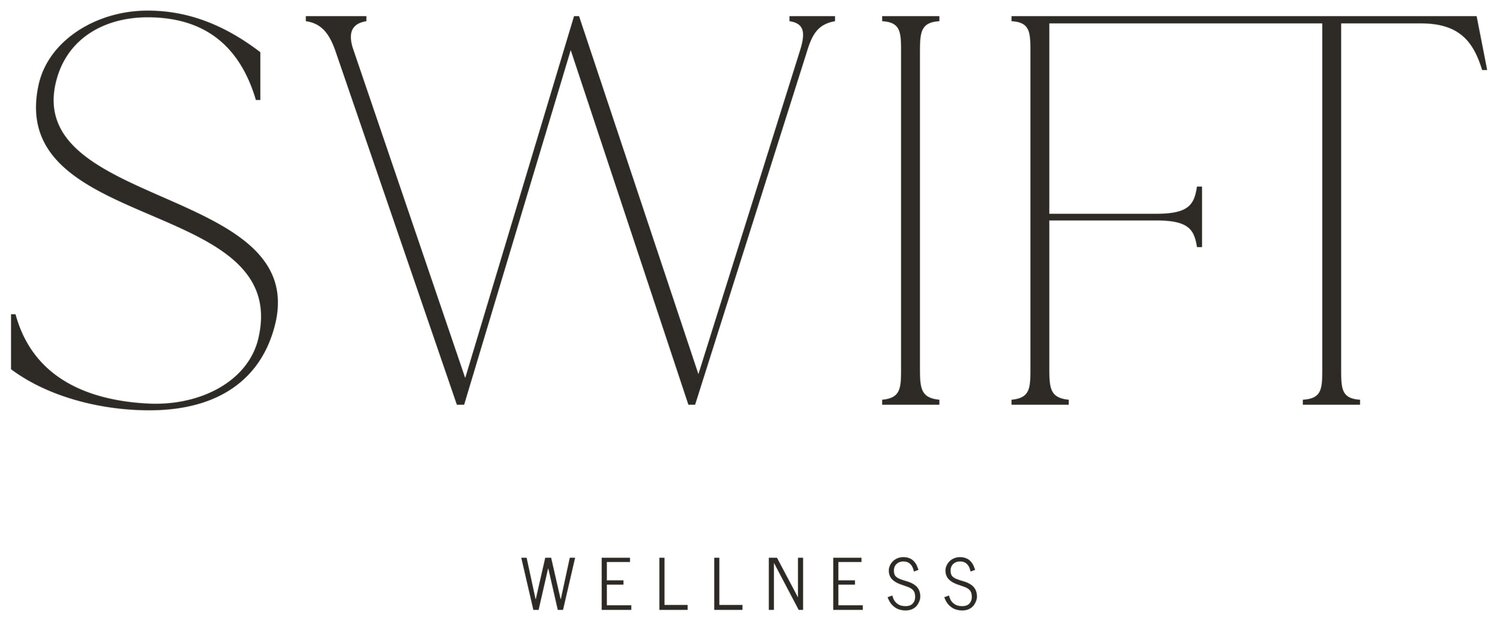The Journey Towards Realizing I’m Non-Binary
““But the truth is, non-binary and gender non-conforming people will always raise questions because we are going against the status quo in a world that values conformity.””
I’ve never felt like I fit into the category of women. I was raised as a girl with an expectation to become a woman. But, out of all of the things my parents did, the one I am most grateful for is that they never made me feel like I had to fill some role of girlhood for them. This expectation came much later, as I was surrounded by other family members and peers who forced the societal expectations of girlhood and then, womanhood, onto me.
There is a part of me that always deeply rejected it, but I never had the language to explain why that was. For me, the journey towards realizing that I am non-binary came from finding language that other people shared about their gender, realizing that a lot of it fit my own experience, and remaining curious about how to fill in the rest for myself.
What does it mean to be non-binary?
This can mean many different things to different people. In Alok Vaid-Menon’s book, Beyond the Gender Binary, they define non-binary as “people who are neither exclusively men nor women,” as well as offering a definition for gender non-conforming, which is, “people who visibly defy society’s understanding of what a man or woman should look like.” Ultimately, non-binary can mean and look different to everyone, but generally, it is having an experience and identity outside of the classic definition of man or woman.
How did my gender exploration begin?
My first language around non-binary identity came from the poetry communities I was a part of. A poet named Lyd Havens wrote a poem called, “I Only Misgender Myself When Fleetwood Mac Comes On.” The first stanza reads:
I’m not a woman, but part of me
is always going to be a teenage girl,
screaming into rivers and watching
herself weep in the mirror.
And this is one of the first times I read something that matches how I feel inside. When I came out on Instagram for the first time, I wrote, “I’ve never felt woman. I’ve never felt daughter or girl.” And these things have always been—and are still—true.
But my understanding of gender continues to evolve. Before I ever spoke these words into existence, I listened to other poets like Zenaida Peterson and Nik Burian speak about their experience with gender. Before I allowed myself my own gender exploration, I listened to Black and brown people as they spoke about how white supremacy and gender-based discrimination intersect.
Before I spoke these words into existence, I told my best friend that I wanted to use they and she pronouns. Then, I silently changed them in all of my bios.
How do she/they pronouns work? How can someone use multiple pronouns?
It’s important to start by saying that pronouns do not equal gender. I am still educating myself about the nuance of this truth and I can say that it is truth. For me, using they and she pronouns meant I am honoring the multitudes of me. Since coming out as non-binary and deepening my understanding of gender, I have since switched to they/them pronouns. The best part about gender is that it is fluid, forever changing, and being queer means I am constantly staying curious about what feels most self-honoring.
When it comes to multiple pronouns, a question that gets asked a lot is, “Which one should I use?” The simplest answer I can give is to just ask! There is nothing rude about asking someone’s pronouns! If you see pronouns in a bio listed as “they/she,” I usually assume that the first pronoun listed is the one that they want to be used the most. But again, you can just ask.
While I have not felt like ‘daughter’, there is an inner child who needs to be held and when I take care of her, I think of her as ‘little girl.’ When I am healing from parts of my teenage self, I see the boy-crazed teenage girl screaming my heartbreak out along with Paramore and My Chemical Romance. I wrote in a poem once:
I once dreamt
of what kind of woman I wanted
to be and now I’m them.
All of them.
As I’ve done more exploring and reading, I came across a post from Emily Motti that said keeping she/her in their pronouns “is kind of like a safety net, a way of managing expectations, a way of appeasing others.” When I first wrote this piece, I used they/she pronouns and have since changed – have removed that safety blanket and it feels amazing.
I am still often am scared that people will always question my gender because of what I look like. But the truth is, non-binary and gender non-conforming people will always raise questions because we are going against the status quo in a world that values conformity.
How did the pandemic inform this experience?
While literature and people I follow on social media informed a lot of my gender exploration, having to isolate due to COVID-19 played a large part in my coming out. Once I didn’t have to worry about being perceived every single day, I was able to really sit with my gender, think about gender expression, and what it felt like to not be called ma’am or miss at the coffee shop or doctor’s office.
Through this isolation came an opportunity for self-reflection and a lot of time on TikTok, where people were having similar conversations about gender that I saw in myself. In July 2020, I officially came out on Instagram and continue to come out every day—something that many queer, trans, and non-binary people experience.
““The thing about being non-binary, I’ve learned, is that it’s not just being okay with, but truly celebrating, the fact that there is not just one way to be—that we truly contain multitudes.””
How do you know if you’re non-binary?
The best advice I can give about knowing if you are non-binary is: If you are asking that question in the first place, it may be a good indication to begin a gender exploration journey. Read books, watch videos, and follow non-binary people. Follow trans people. Find a local LGBTQIA+ organization where you live and find a community where you can ask questions. At the end of the day, the only person who will know if you are non-binary is you and gender can look and feel so many different ways.
How do you come out as non-binary?
Please know, first of all, that gender is a deeply personal exploration and at the end of the day, you do not owe anyone anything. Also know that coming out happens over and over again. But if/when you are ready to come out, I recommend talking to your close friends or people you feel safest with first. For me, I talked to my best friends and my partner. The first thing I ever said was, “I think I want to start trying out they pronouns.” It took me a while to actually start doing it and then it took me even longer to fully identify as non-binary.
My gender exploration is ongoing. My identity shifts and changes as I gain more language and learn more about the history of gender and sexuality. The thing about being non-binary, I’ve learned, is that it’s not just being okay with, but truly celebrating, the fact that there is not just one way to be—that we truly contain multitudes. We can both honor those in our gender identities and honor other people by celebrating, respecting, and having empathy for all of the different ways a person can be.
““A lot of people may tell you to ‘just not care what people think.’ I’m not going to tell you that...The thing I know to be true is that there are some people who will see you fully in your multitudes, and there are some who either can’t or won’t...ultimately, it is up to them to either do their own research so they can understand it in a way that makes sense for them, or they need to love and respect you without understanding it. ”
What happened when you came out?
When I came out, I was already surrounded by a queer community I felt safe in. I know that’s not the case for everyone, so I do not take that privilege for granted. Overall, when I came out, people were celebratory. The people I have surrounded myself with only want me to be the most authentic versions of myself. It did take some adjusting for my friends and partner, though. When they referred to me as a woman or girl, I gently corrected them, they apologized, and we moved on.
We had a lot of ongoing conversations about shifting how they saw me because it is more than just a pronoun change—it is also a desire to not be thought of as a woman. It took time and a few different vulnerable conversations but, after some time, it just became a given in my relationships.
A big thing that people worry about when coming out is if they will be accepted by their family. For me, that wasn’t an issue because I don’t talk to my family and, if we do talk, we don’t have deep conversations about gender because it’s simply not in my family’s capacity. That is a grief I do carry with me every day, but I have so much love surrounding me with my friends that it is a grief that feels smaller many days.
A lot of people may tell you to “just not care what people think.” I’m not going to tell you that because I know how important it is as a queer person to want to be seen. The thing I know to be true is that there are some people who will see you fully in your multitudes, and there are some who either can’t or won’t. You can explain it to them as much as you want, but ultimately, it is up to them to either do their own research so they can understand it in a way that makes sense for them, or they need to love and respect you without understanding it.
Past that, it’s up to you to find out what boundary feels best for you and know that, with any shift or change, there is grief that naturally comes along with it. That is okay, you will make it through it, and I promise you there are people who want to support you.
““Past that, it’s up to you to find out what boundary feels best for you and know that, with any shift or change, there is grief that naturally comes along with it. That is okay, you will make it through it, and I promise you there are people who want to support you.””
Continued Reading:
Read: Beyond the Gender Binary by Alok Vaid-Menon
Read: They/Them: A Visual Guide to Nonbinary Pronouns and the World of Gender Fluidity, by Stuart Getty
Read: Life Isn’t Binary
Listen to this episode: The Man Enough Podcast
Listen: Jonathan Van Ness’s podcast and watch their upcoming Netflix series, Getting Curious
Listen: Ev’Yan Whitney’s podcast about Decolonizing Gender
Follow: Devin-Norelle to learn more about neopronouns







